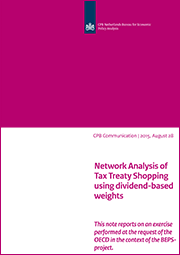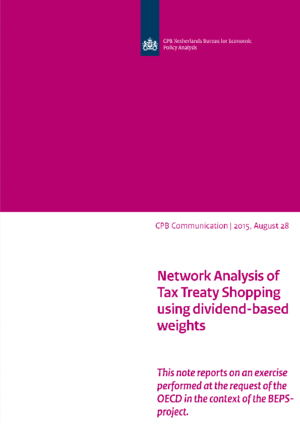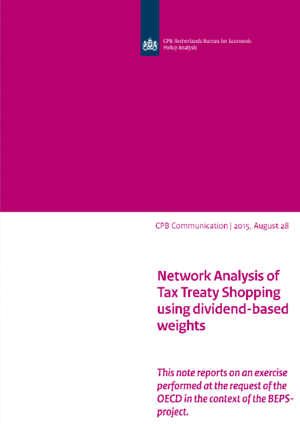Network Analysis of Tax Treaty Shopping using dividend-based weights

Its full potential, for repatriating dividends, is in the order of 75 billion USD worldwide, yearly. This estimate follows from an exercise performed by the CPB using a network analysis of international corporate taxation. Hardly any quantitative assessment of treaty shopping is available and the estimate is a background for the OECD work on Base Erosion and Profit Shifting (BEPS).
End 2014 CPB released an earlier version of the network analysis of tax treaty shopping (Van ‘t Riet and Lejour, 2014). It found an average worldwide double tax rate on repatriating dividends of 12 percent. Treaty shopping was reported to reduce this rate to 6 percent. No attempt was made to quantify the reduction of the tax burden, and hence tax revenue, in money terms. A reason for this was that the underlying bilateral dividend flows were approximated on the basis of GDP. The present exercise replaces these GDP-based weights with weights based on reported bilateral dividend flows and imputations based on reported FDI positions. The data are extracted from the OECD FDI Statistics (4th Edition, BMD4).
With the new weights, a world average repatriation tax rate of 11 percent is found for direct tax routes. And tax treaty shopping can reduce this to less than 5 percent; more than a halving of the tax burden. Combined with an estimated world total of some 1250 billion USD of dividend flows this leads to a potential tax reduction of 75 billion USD yearly. The world average repatriation tax rates are lower for the new weights than for those based on GDP because higher weights are assigned to country pairs with lower repatriation tax rates. This might have been expected as, ceteris paribus, lower taxes lead to higher investments.
Read also the publication: Ranking the Stars: Network Analysis of Bilateral Tax Treaties
Downloads
Authors



